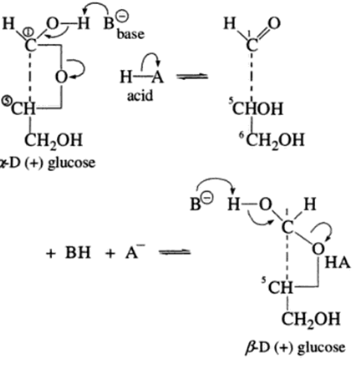 Short Answer Type
Short Answer TypeWhat are the different types of RNA found in the cells of organisms? What are their functions?
Explain mutarotation. Give its mechanism in case of D-glucose.
The spontaneous change in specific rotation of an optically active compound is called mutarotation.All reducing sugars undergo mutarotation. Glucose show mutarotation because during the formation of hemiacetal, another asymmetric carbon is produced (C-1) which can exist in two forms,
